Uncovering Hidden Trade Gems: Rethinking Export Potential with the OEC
In a rapidly changing trade landscape, staying ahead means predicting the future. Explore OEC tools to uncover emerging export opportunities and secure your competitive edge.
Identifying Hidden Trade Opportunities
Success in international trade often hinges on identifying opportunities before they are widely recognized. Traditional models like Revealed Comparative Advantage (RCA) and the Gravity Model provide a foundational understanding but have limitations. OEC tools and data allow you to go beyond these basics, integrating broader data and models to anticipate global trade shifts and uncover untapped markets.
Moving Beyond Comparative Advantage: The Future of Trade Analysis
Comparative advantage explains a country’s ability to produce a good at a lower opportunity cost than others. It’s measured using Revealed Comparative Advantage (RCA), which compares a country’s export share of a product to its global export share. For instance, a high RCA in crude oil means it makes up a much larger portion of that country’s exports compared to its share in global trade.
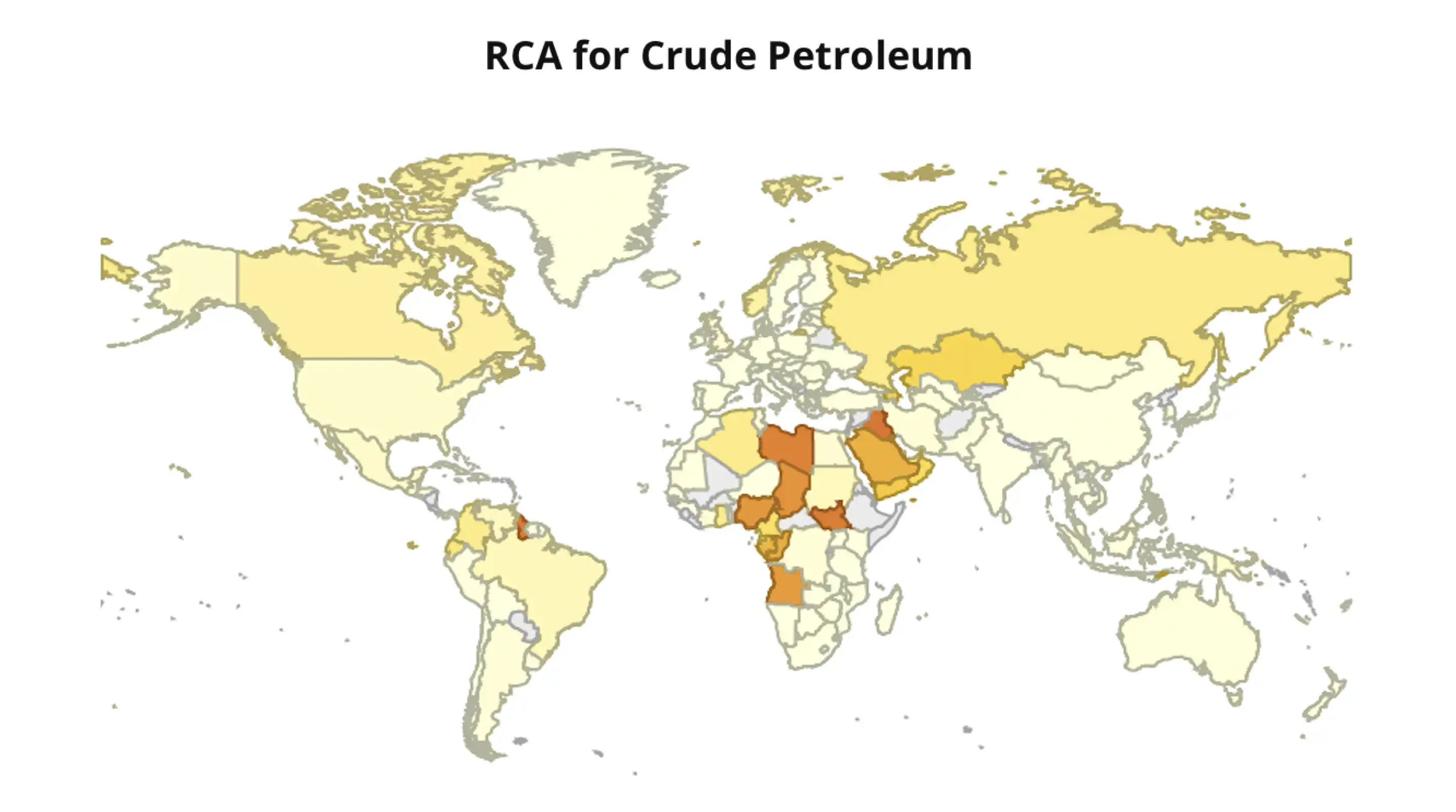
While RCA captures current export strengths, it tends to be backward-looking, potentially overlooking emerging industries with growth potential. For instance, a country investing in renewable energy may have a low RCA now due to its early stage, but significant future expansion is possible. Integrating forward-looking indicators with RCA provides a more dynamic perspective, helping to anticipate where comparative advantages might develop.
Trade Flows That Extend Gravity
Some models, like the Gravity Model, predict trade flows based on economic size and distance. But what happens when trade relationships defy these expectations?
Take New Zealand, for example. Despite its small size and geographic isolation, New Zealand significantly increased trade with China by becoming the first developed country to sign a free trade agreement. This shows how strategic partnerships and specialization drive trade beyond traditional model predictions.
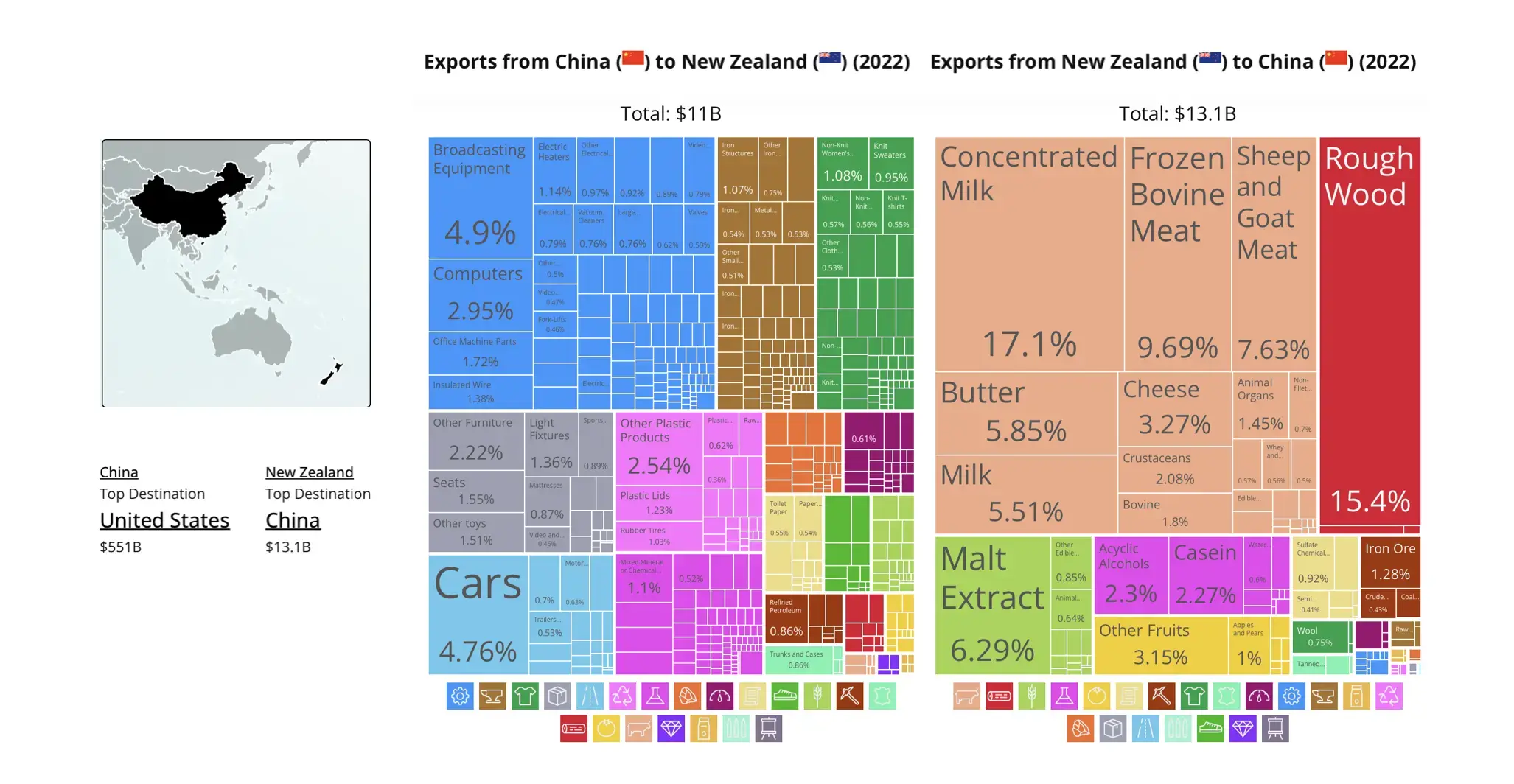
The OEC’s tools help you analyze these outliers—those “defiant” trade flows that don’t fit the typical mold—by examining the nuanced factors that drive them. Understanding these unique dynamics can lead to discovering new markets that traditional models might overlook.
The OEC Approach: Integrating Complexity for Deeper Insights
To assess export potential, the OEC’s models integrate a broader set of variables, offering a more comprehensive and actionable view. Two key insights guide this approach:
- Common Ground Boosts Trade: Countries with shared history, language, and culture often have stronger trade relationships, simplifying communication and reducing costs.
- Familiar Products Open New Doors: Countries often expand exports by introducing products similar to those they already produce, leveraging existing infrastructure and expertise to enter new markets.
These principles are central to the enhanced bilateral relatedness model employed by the OEC. This extended gravity model, grounded in research by Jun et al. (2019), explains over 50% of future trade flow variance by considering similarities among products and geographies.
How to Calculate Export Potential
You can explore export potential across several dimensions. For example, search for a specific product, like wheat, to assess its export and import potential from different countries.

You can also evaluate export potential from a country perspective to identify products with the highest growth potential and their target markets. For example, potential exports for India in machinery.

Another approach is to examine specific trade partnerships, like China and Brazil. The model, using data up to 2022, predicts a 40.9% increase in China’s integrated circuit and a 72.64% increase in car exports to Brazil, while corn exports from Brazil to China have a potential of 92.6%.
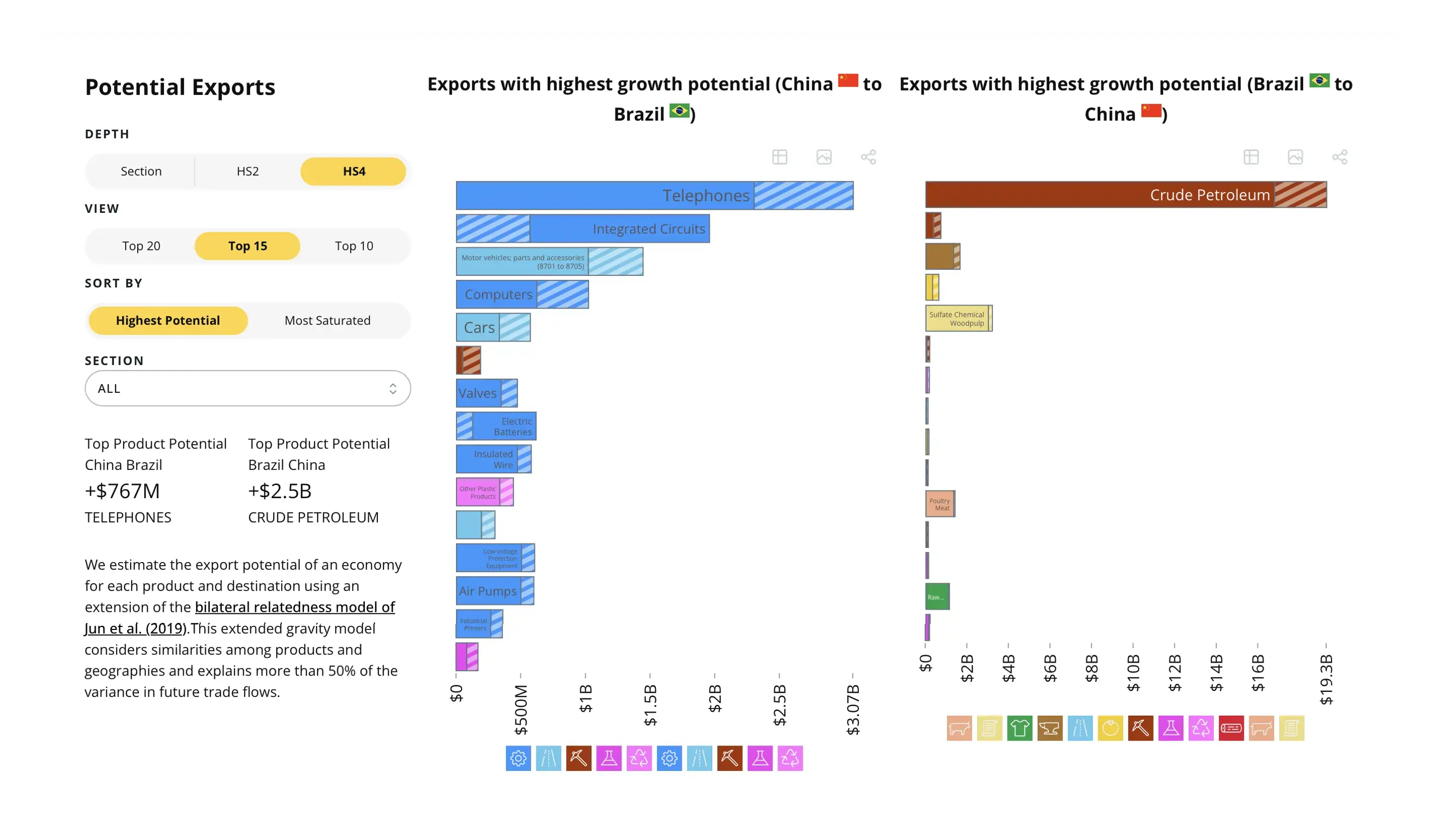
Avoiding Trade Saturation: Recognizing Market Limits
While identifying opportunities is crucial, recognizing market saturation is equally important. The OEC’s export potential tool indicates that products like Phosphatic Fertilizers and Soybeans are outperforming trade predictions between China and Brazil, potentially signaling oversupply or rising competition. These insights are valuable for businesses and policymakers looking to diversify and avoid market saturation.
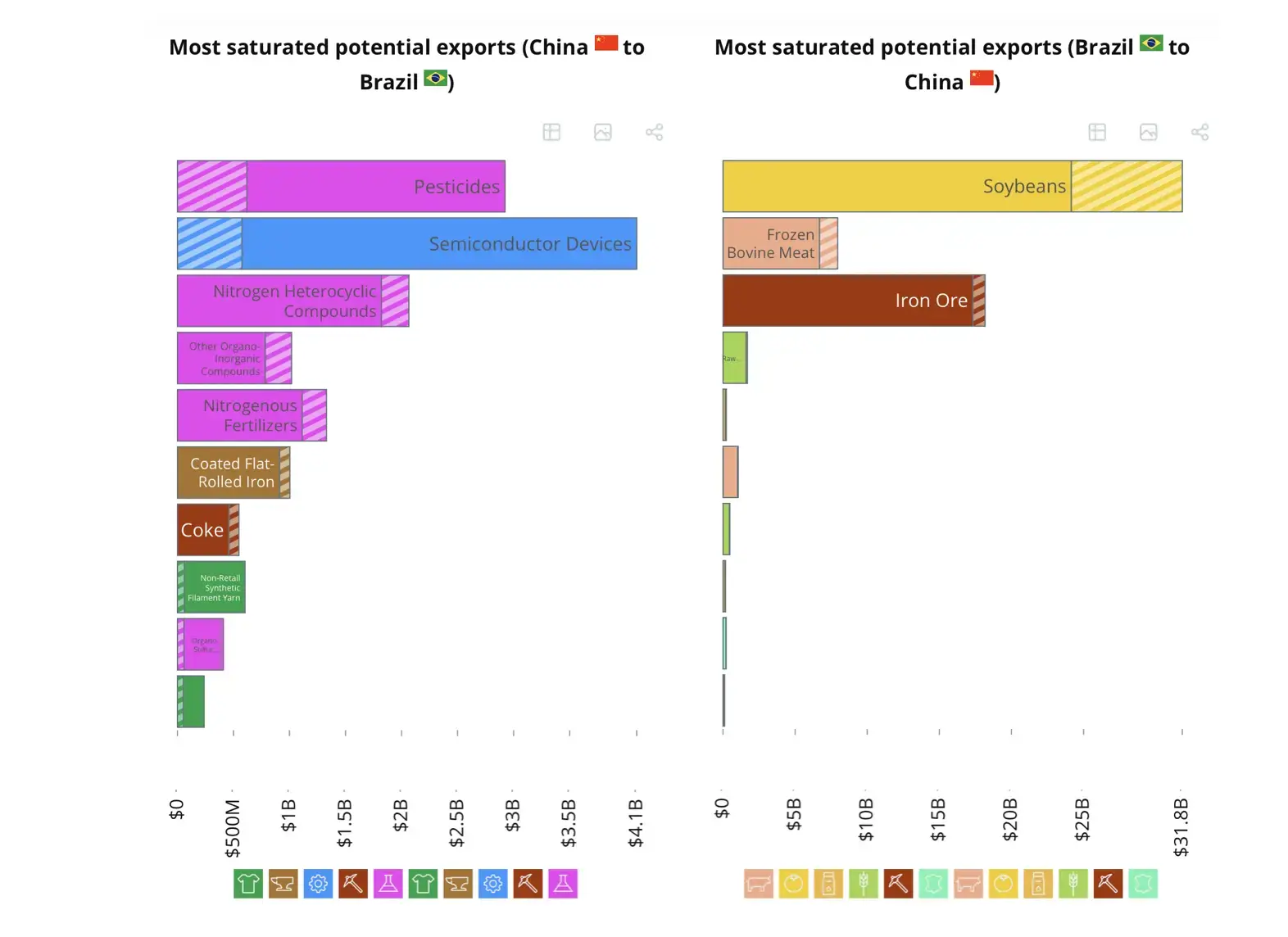
Embracing Complexity to Drive Future Growth
Identifying opportunities is crucial, but so is addressing challenges and staying aware of current developments. For instance, while Brazil’s corn exports to China are set to grow, severe droughts—like Brazil’s worst in a century—are disrupting global grain markets. Analyzing historical volatility and climate impacts enables businesses to adapt and seize emerging opportunities.
In 2024, China’s car exports to Brazil surged by 221%, driven by the rapid adoption of electric and hybrid vehicles. This surge underscores China’s rise as a leader in the EV sector and demonstrates how quickly trade dynamics can shift with technological change. The OEC’s real-time data offers insights into emerging opportunities and their evolution.
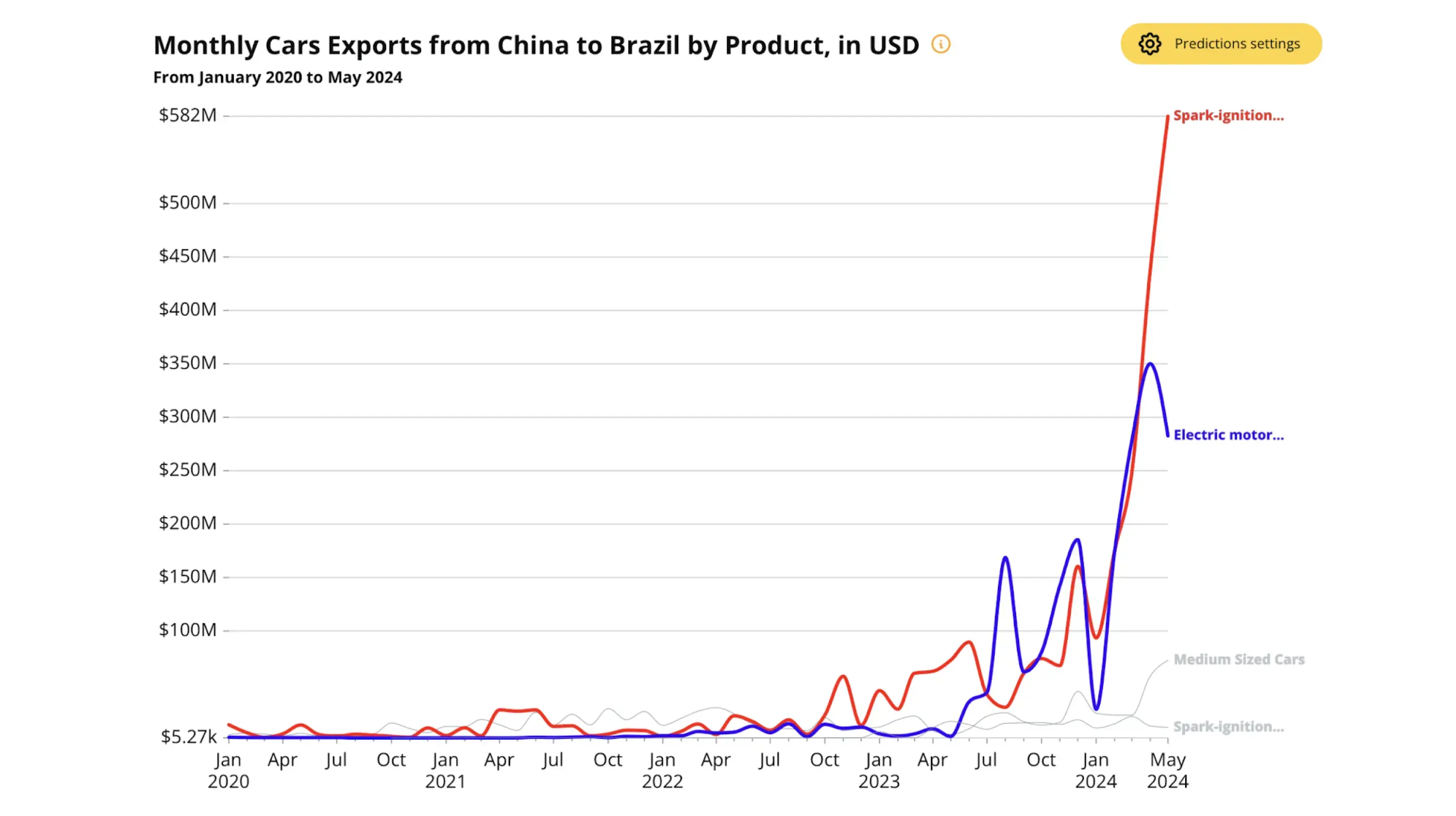
Relying solely on traditional trade models can limit your potential in a rapidly changing landscape. Analytical tools, detailed data, and models like the bilateral relatedness model help uncover hidden opportunities, evaluate “black swan” events, and strategically position your business for future markets.
Conclusion
In the fast-paced world of international trade, waiting for trends to become obvious means you’re already too late. The OEC’s tools provide the foresight you need to act decisively. Explore it today and uncover your next big trade opportunity before your competitors do.
